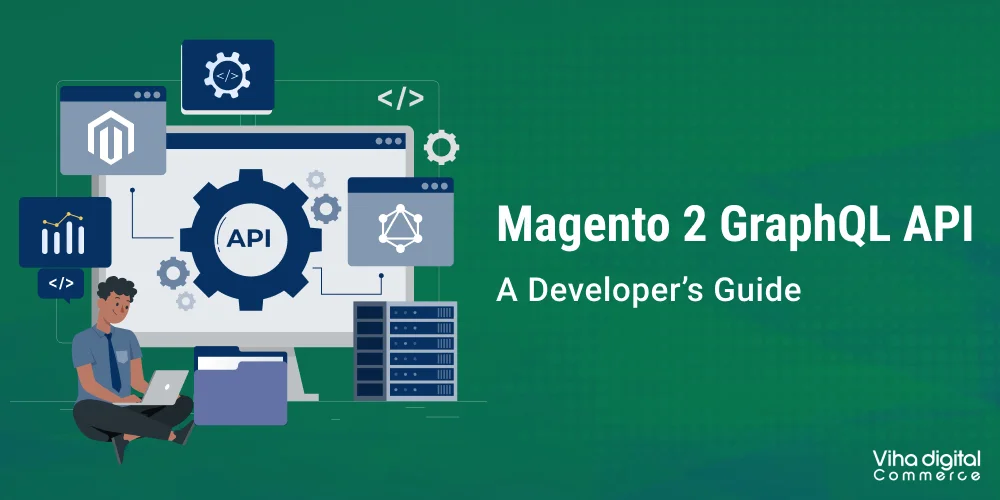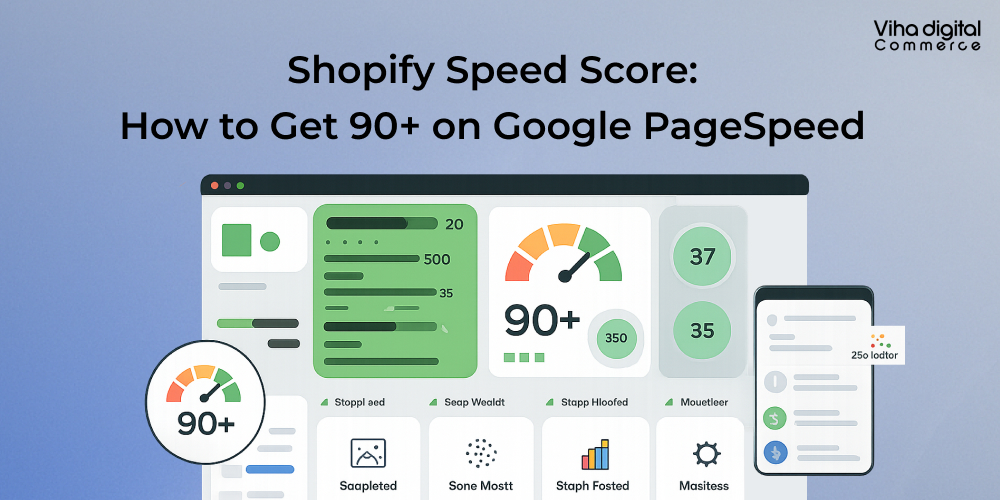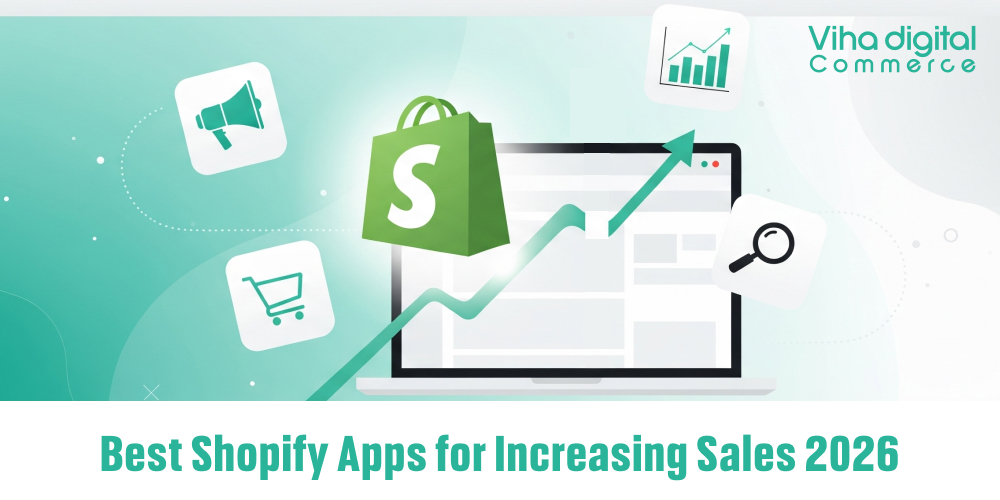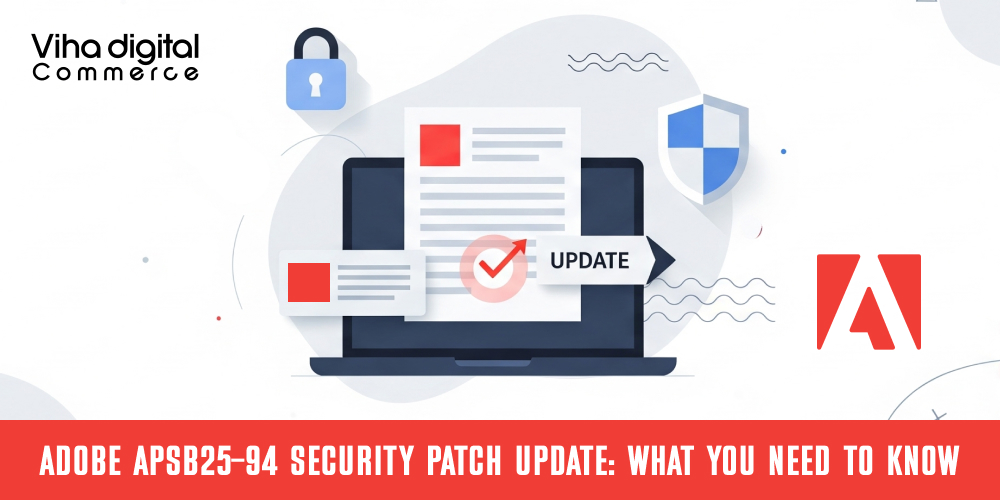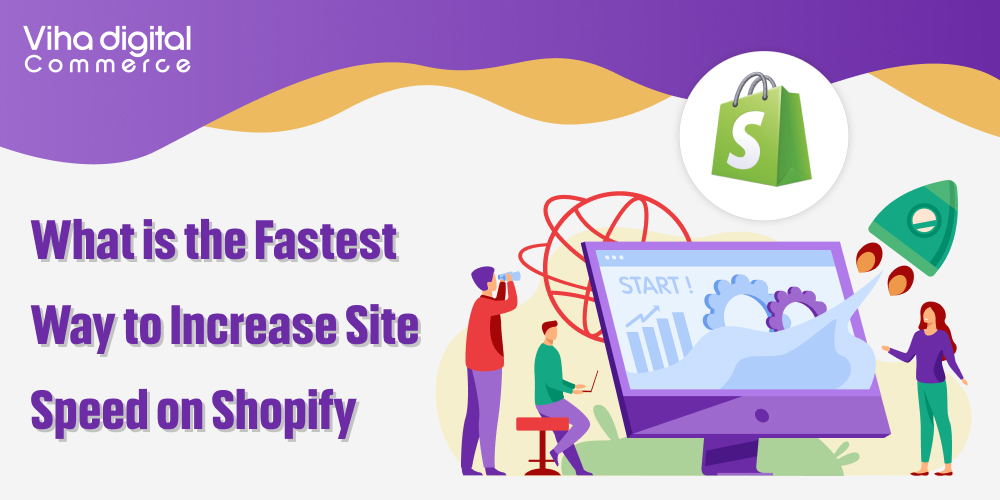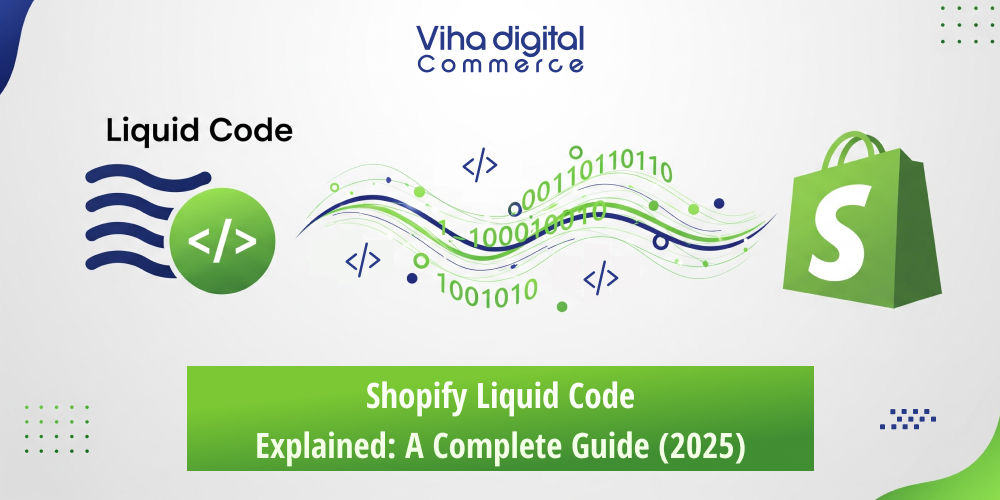Start a Shopify Store: Easy Steps to Your Online Store in 2025

Want to start your own online business in 2025? Look no further than Shopify! This step-by-step guide will show you just how easy it can be to create a Shopify store and start selling products online.
Whether you’re a complete beginner or have some experience with e-commerce, Shopify makes it easy to launch your store and reach customers worldwide. Let’s dive in and learn how to start a Shopify store!
Understanding Shopify Stores
What is Shopify?
Shopify is a powerful e-commerce platform that allows you to create an online store without needing extensive technical skills
Essentially, it’s an all-in-one solution that provides you with the tools to design, manage, and market your products.
Thinking about starting a Shopify store in 2025? Well, using Shopify means you can focus on building your brand and selling your products instead of worrying about the technical aspects of running an online store. The Shopify platform handles everything from payment options to Shopify shipping, making your life easier.
Benefits of Using Shopify
There are numerous benefits to using Shopify to start your online store. For starters, Shopify offers a user-friendly interface, meaning you don’t need to be a tech whiz to set up your Shopify store. Plus, Shopify Payments makes handling transactions a breeze. You also get access to a wide range of free themes to create a visually appealing store design.
Beyond the basics, Shopify integrates seamlessly with other tools and services, making it easy to scale your business. If you plan to run a Shopify store, then consider the scalability Shopify offers!
Read More: Shopify integration guide
Types of Shopify Stores
When you start a Shopify store, you have plenty of options in the types of store you create. You could open a Shopify store selling your own handmade crafts or consider dropshipping, where you don’t need to hold any inventory yourself.
Whether you want to sell physical products, digital downloads, or even offer services, Shopify has got you covered. When you set up your Shopify store, you can tailor it to your specific business needs and target audience, optimizing your product pages with engaging product descriptions to make your store optimized for sales.
Step-by-Step Guide to Start a Shopify Store
Creating Your Shopify Account

Ready to start a Shopify store? The first step is to create a Shopify account. To set up your Shopify account, go to the Shopify website and sign up for a free trial.
This free trial lets you explore the platform and start an online store without any initial financial commitment. During the account creation process, you’ll be asked for some basic information, such as your email address and a password.
The Shopify platform will then guide you through setting up your Shopify admin panel.
Choosing a Store Name and Domain
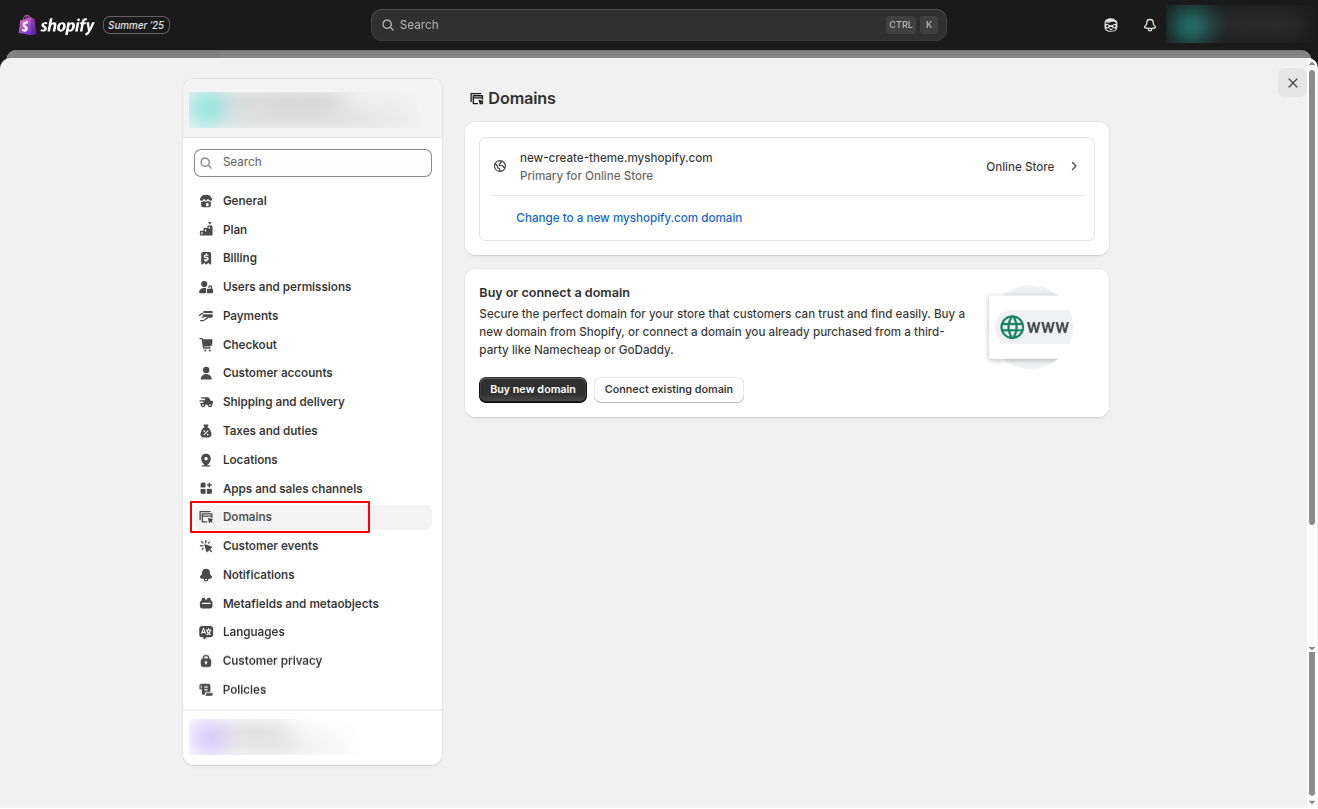
Selecting a unique store name and domain is crucial when starting a Shopify store. Your store name should be memorable and relevant to the products you plan to sell. Once you have a store name in mind, check if the corresponding domain name is available.
You can purchase a domain name through Shopify or use a third-party domain registrar. Ensure your domain name is easy to spell and reflects your brand identity. Remember, your store name is a key part of your brand!
Setting Up Your Shopify Store
With your account created and your domain secured, it’s time to set up your Shopify store! Begin by choosing a Shopify theme from the Shopify Theme Store. Shopify offers a variety of free themes and premium themes to match your brand’s aesthetic.
Next, customize your store design by adding your logo, creating product pages with engaging product descriptions, and setting up shipping options. Make sure that the store features are what you need to run a Shopify store effectively.
Shopify makes it easy to create a professional store without coding. But if you want advanced features or custom design, a Shopify web development company can build a tailored solution for your business.
Cost to Start a Shopify Store
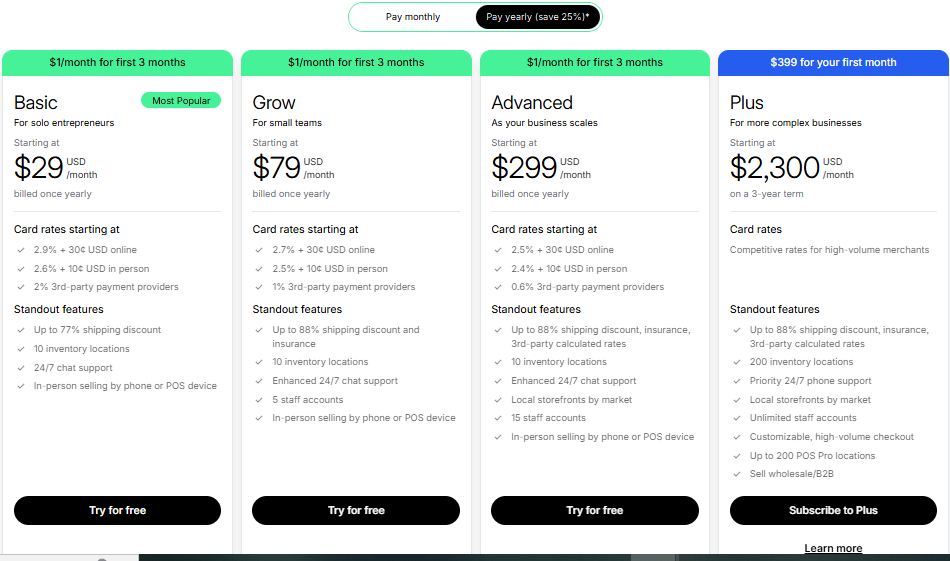
Shopify Pricing Plans
Understanding the Shopify pricing plans is essential when you start a Shopify store. Shopify offers several plans, ranging from basic options suitable for starting an online store without a large budget to advanced plans like Shopify Plus for enterprise-level businesses.
Read More: How Much Does a Shopify Website Cost?
Each Shopify plan comes with different features, such as the number of staff accounts, transaction fees, and advanced reporting tools. Evaluate your business needs and budget to choose the Shopify plan that’s right for you.
Remember, Shopify offers a free trial to help you decide. Choosing the right plan will help you to launch your store effectively.
Additional Costs to Consider
Besides the monthly Shopify plan, you’ll also need to consider additional costs when you start a Shopify store. These costs might include purchasing a custom domain name, investing in premium Shopify themes, and using paid Shopify apps to enhance store functionality.
Marketing and advertising expenses are also significant, as you’ll need to promote your store to attract customers. Depending on your business model, you might also need to factor in inventory costs, especially if you’re not dropshipping.
Planning for these extra expenses will help you to manage your finances effectively and run a Shopify store successfully.
How Much Does Shopify Charge Per Transaction?
Understanding transaction fees is vital when you start selling on Shopify. Shopify charges transaction fees on each sale you make unless you’re using Shopify Payments.
If you use Shopify Payments, the transaction fees are waived, which can save you money in the long run. The exact amount Shopify charges per transaction varies depending on your chosen Shopify plan. Higher-tier plans typically have lower transaction fees.
Consider the volume of sales you anticipate and choose a plan that minimizes these fees to maximize your profits. Also, keep in mind that using Shopify Payments will remove transaction fees.
Customizing Your Shopify Store
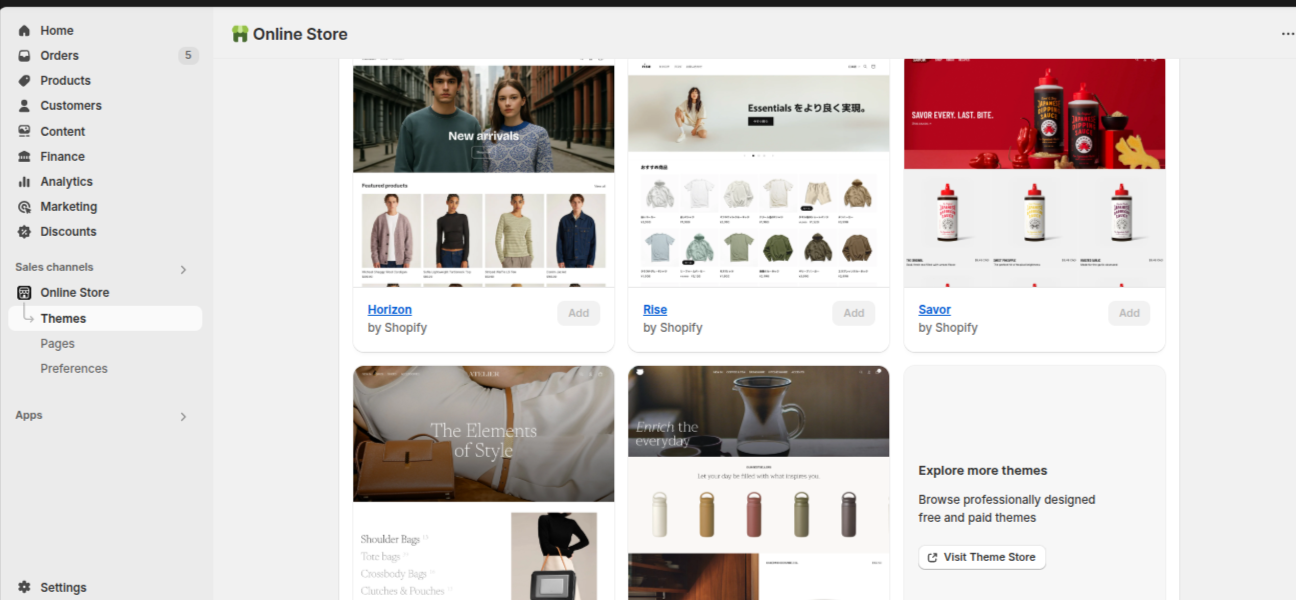
Selecting a Theme
Choosing the right Shopify theme is critical when you start a Shopify store. The Shopify theme is the foundation of your online store’s visual identity, so select one that aligns with your brand and target audience.
When you start an online store, browse the Shopify Theme Store for a wide selection of free themes and premium options. Consider factors like the layout, color scheme, and available customization options.
In the admin panel, go to “Online Store” and then click on “Themes.”
Browse the theme store for free and paid themes. Preview themes to see how they look and function.
Once you find a theme you like, click “Add” and then “Publish.”
Optimizing Your Store Layout
Optimizing your store layout is crucial to ensure a seamless browsing experience when you start a Shopify store. Arrange product pages logically, ensuring easy navigation. Utilize clear calls-to-action and strategically place key elements like the search bar and shopping cart. A well-organized layout not only enhances the user experience but also boosts your search engine rankings.
It makes your store more visually appealing and user-friendly. A well-optimized store can significantly improve your conversion rates and encourage customers to explore more products in your store.
Adding and Customizing Product Descriptions
Compelling product descriptions can make or break a sale when you start a Shopify store. Write detailed, engaging descriptions that highlight the benefits and features of your products.
Use high-quality images and videos to showcase your products from multiple angles. Optimize your product descriptions with relevant keywords to improve search engine visibility and attract more customers.
When you start an online store without a team of professionals, this helps potential customers find your store. Good product pages make your store more attractive and informative, which boosts sales.
In the admin panel, click on “Products” and then “Add product.”
Enter the product title, description, and other details like price, SKU, and inventory.
Upload high-quality images of your product and add variants if applicable (e.g., different sizes or colors).
Running Your Shopify Store
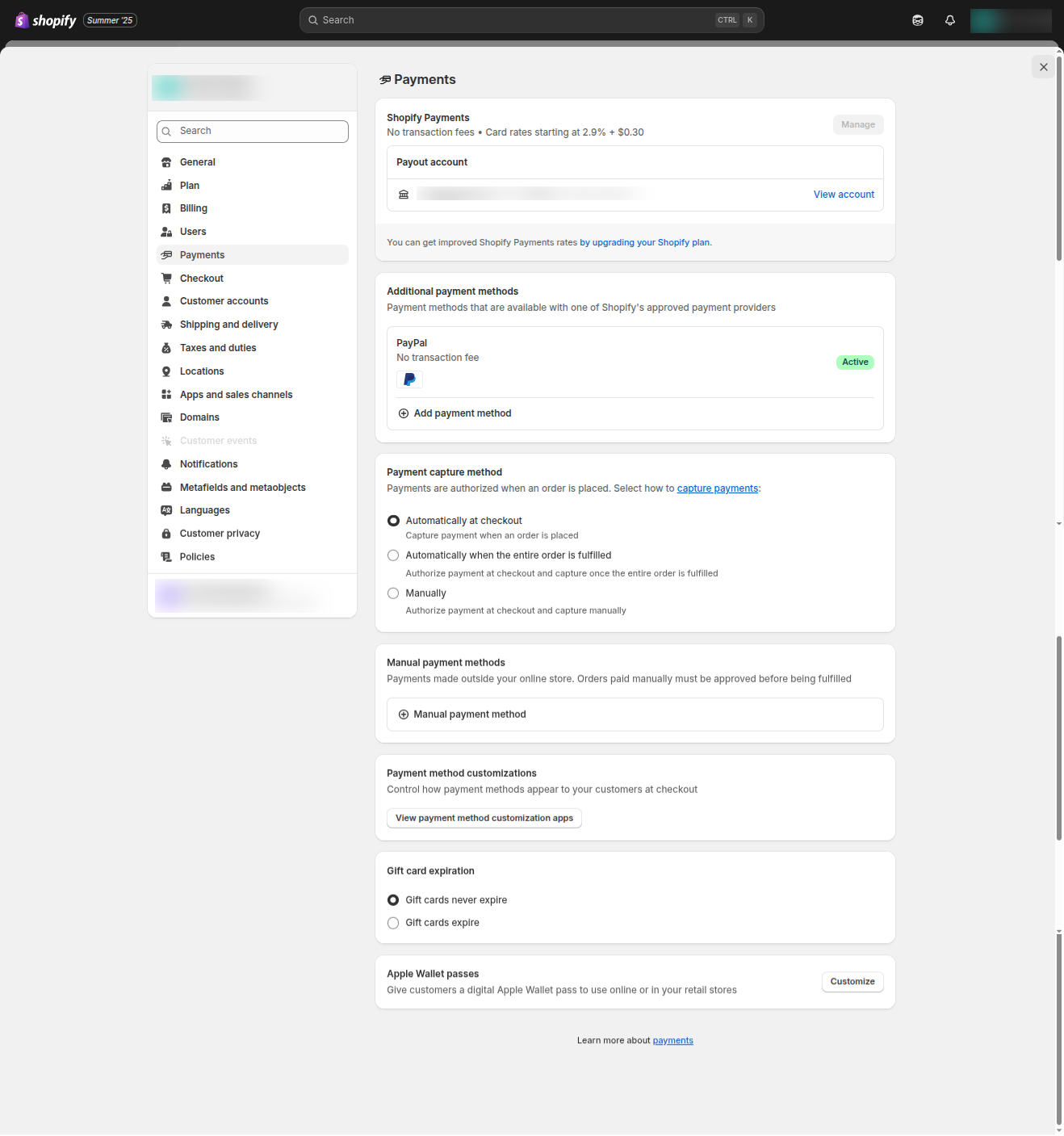
Integrating Shopify Payments
Shopify Payments simplifies the payment process for both you and your customers. It allows you to accept various payment methods, including credit cards, debit cards, and other digital payment options.
Shopify Payments integrates seamlessly with your Shopify store, making the setup process straightforward. Plus, using Shopify Payments can often reduce transaction fees, helping you to save money and boost your profit margins.
When you start a Shopify store for beginners, this will increase your chances of having sales.
Setting Up Shipping and Tax Options
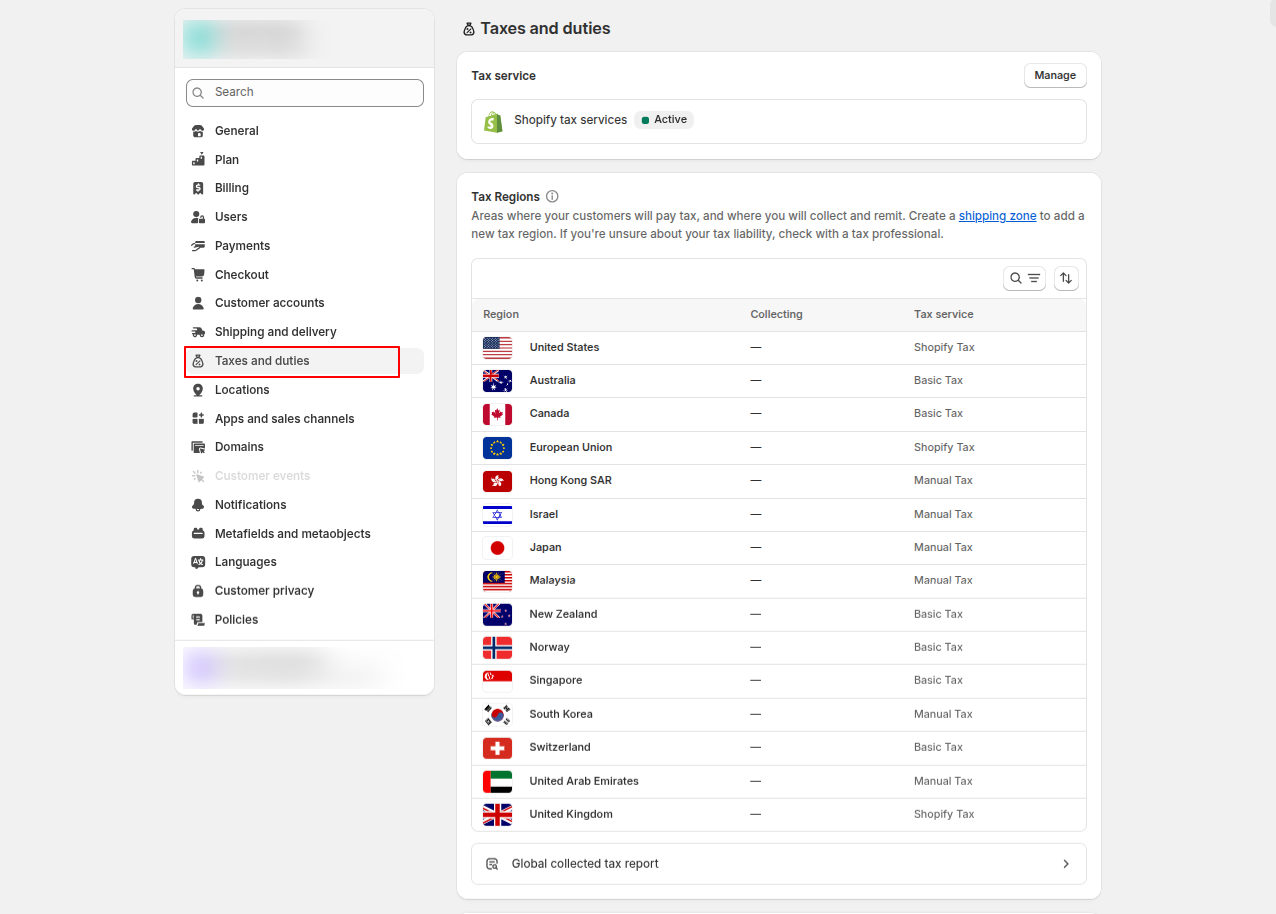
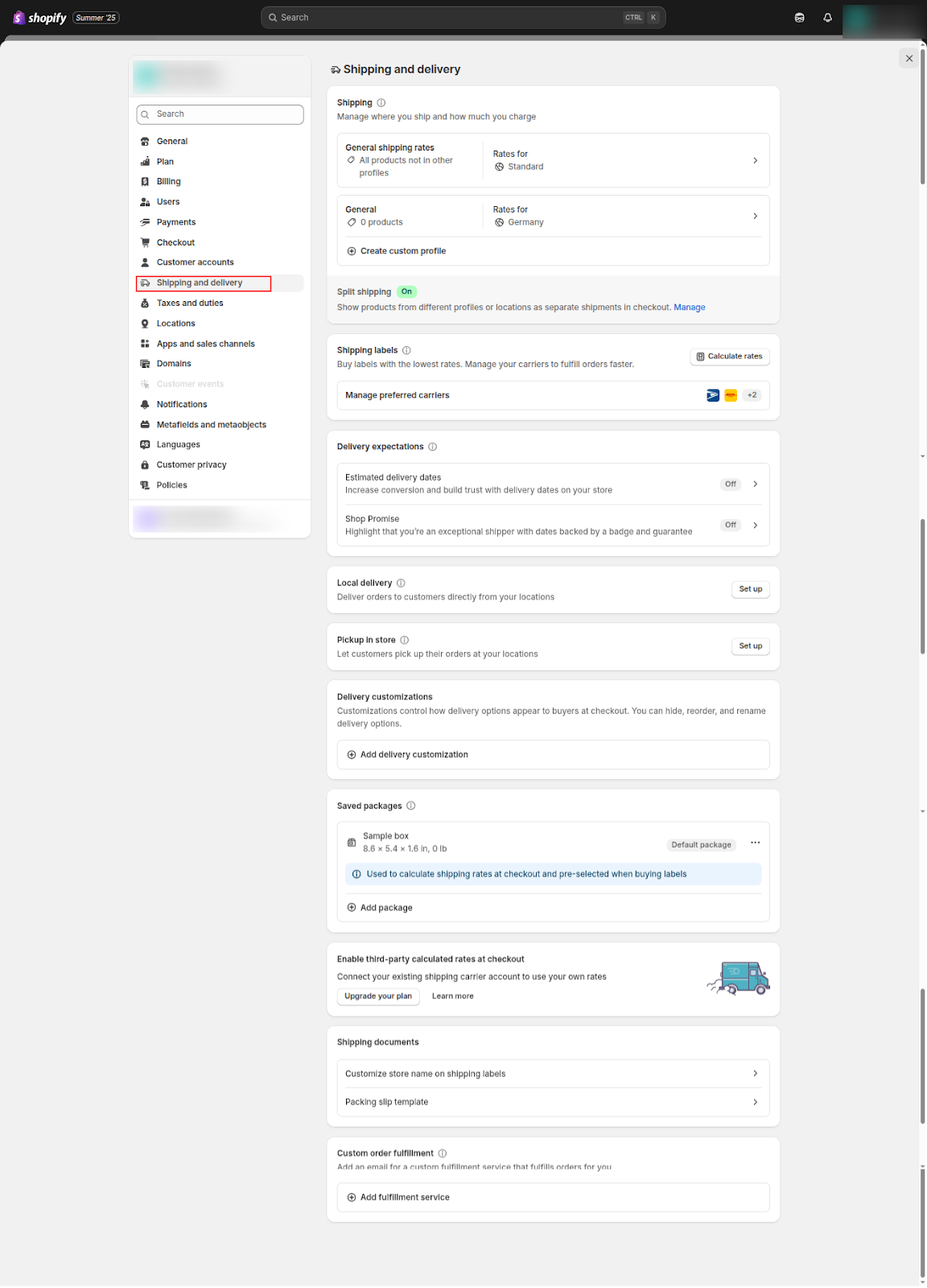
Configuring accurate shipping and tax options is a must when you start a Shopify store. You’ll need to set up shipping zones, rates, and methods to ensure that your customers are charged correctly. Also, you must comply with local tax laws and regulations.
Consider offering options like free shipping or flat-rate shipping to incentivize customers to complete their purchases.
Providing clear and transparent shipping and tax information builds trust with your customers and prevents surprises at checkout. Consider Shopify Shipping for your online store to make your life easier.
Marketing Your Online Store
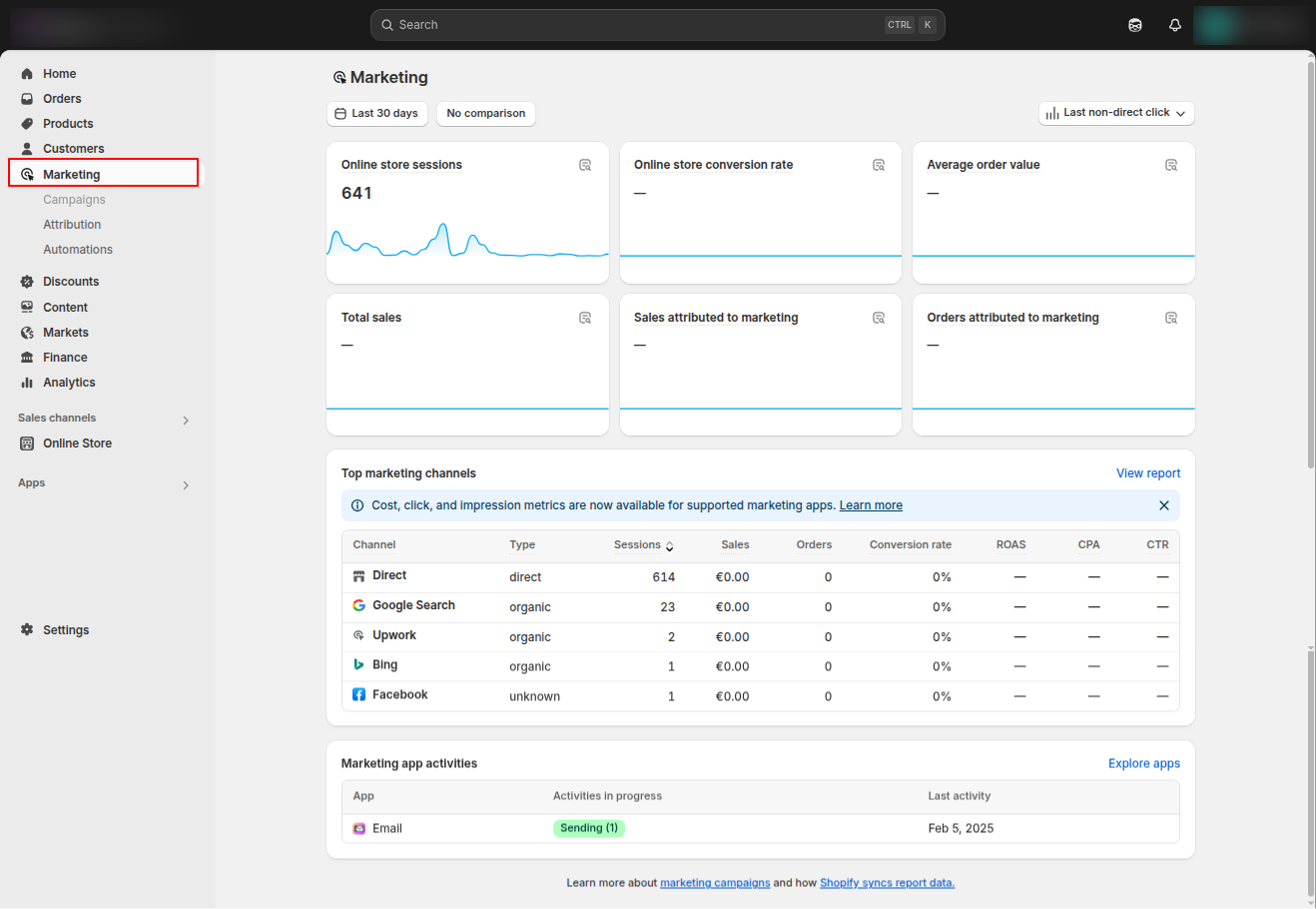
Effective marketing is essential for driving traffic and sales when you start a Shopify store. Utilize a mix of marketing strategies, including social media marketing, email marketing, and search engine optimization (SEO).
Create engaging content to attract and retain customers. Consider running targeted ad campaigns to reach your ideal audience. Track your marketing efforts to measure their effectiveness and adjust your strategies accordingly.
Effective marketing will help you build brand awareness and grow your business. Remember, using Shopify and advertising your online store is essential to make money.
Dropshipping with Shopify
Getting Started with Dropshipping
Dropshipping is an excellent option if you’re looking to start a Shopify store without holding any inventory. Dropshipping allows you to sell products without managing stock, making it ideal for those who want to start a Shopify store for beginners with minimal upfront investment.
When you start a Shopify store using dropshipping, you partner with suppliers who handle inventory and shipping, letting you focus on marketing and customer service.
Shopify offers several apps that integrate seamlessly with dropshipping suppliers, streamlining the process.
Choosing Products for Your Store

Selecting the right products is essential when you start a Shopify store, especially if you are starting a Shopify store in 2025. Focus on identifying niche markets with high demand and low competition.
Research trending products and analyze market data to make informed decisions. High-quality products with attractive profit margins will attract more customers.
It makes your store more appealing. Remember, your product selection can make or break your online store.
Managing Supplier Relationships
Building strong relationships with your suppliers is crucial for the long-term success of your dropshipping business. Good communication, reliable shipping, and consistent product quality are essential to ensure customer satisfaction when you start a Shopify store.
Negotiate favorable terms, such as better pricing or faster shipping times, to improve your profit margins. Regularly evaluate supplier performance and be prepared to switch suppliers if necessary. These are essential aspects of running a Shopify store.
Starting to Sell in 2025
Launching Your Store
The moment you have been waiting for, it’s time to launch your store! Ensure everything is in place before you launch your store, including your Shopify theme, product descriptions, and payment options.
Test the checkout process to ensure a smooth customer experience. Promote your store on social media and through email marketing to generate initial traffic. With these things tested, it is time to launch your store and start selling!
Strategies for Initial Sales
Generating initial sales is crucial to kickstart your business when you start a Shopify store. Offer promotions, discounts, and free shipping to incentivize early purchases. Run targeted ad campaigns on social media to reach your ideal customers.
Collect customer feedback and reviews to build trust and credibility. Consider offering a loyalty program to encourage repeat purchases. All these strategies will improve your chances for your online store to succeed.
Using Shopify Email for Marketing
Shopify Email is a powerful tool to promote your business and engage with your customers. Use Shopify Email to send targeted email campaigns, such as product announcements, promotions, and newsletters.
Personalize your emails to resonate with your audience. Track the performance of your email campaigns to optimize your strategy and improve results. Shopify makes it easy to manage your email marketing efforts and grow your business with the right Shopify plan.
Conclusion
Starting a Shopify store in 2025 is easier than ever. With the right planning, smart product selection, and effective marketing, you can launch a store that attracts customers worldwide.
To maximize results, consider partnering Viha Digital Commerce With a Shopify web development company—they can help you design, customize, and optimize your store for long-term growth.
